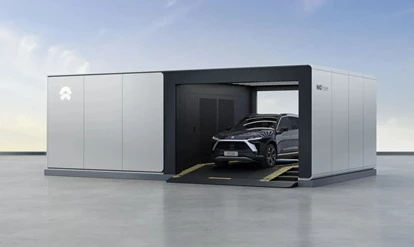Battery swapping technology has emerged as a game-changer, offering a faster, more convenient, and sustainable alternative to traditional charging methods. Explore the concept of battery swapping cars, its benefits, challenges, and its potential to reshape the future of transportation.
The Need for Innovation
As the demand for electric vehicles continues to surge, the limitations of conventional charging infrastructure have become increasingly evident. Long charging times, limited charging stations, and range anxiety are among the concerns that have hindered the widespread adoption of EVs. Battery swapping emerges as a viable solution to address these challenges, providing an efficient and convenient alternative to conventional charging.
How Battery Swapping Works
Battery swapping involves the quick exchange of a depleted battery with a fully charged one at specialised stations. The process is designed to be fast and seamless, taking only a fraction of the time required for a traditional charging session. Users can drive into a swapping station, and within a few minutes, their vehicle's battery is swapped, allowing them to continue their journey with minimal disruption.
Benefits of Battery Swapping Cars
- Time Efficiency: One of the most significant advantages of battery swapping is the time savings it offers. While traditional charging may take several hours, a battery swap can be completed in just a few minutes, providing a level of convenience that is crucial for widespread EV adoption.
- Increased Range: Battery swapping can extend the effective range of an electric vehicle. Instead of waiting for a battery to charge, users can simply swap batteries and continue their journey, eliminating concerns about range limitations.
- Reduced Range Anxiety: Range anxiety, the fear of running out of battery power before reaching a charging station, is a common concern for EV owners. Battery swapping can alleviate this anxiety by offering a quick and reliable solution for on-the-go charging.
- Enhanced Sustainability: Battery swapping can contribute to the overall sustainability of electric vehicles. By streamlining the battery swapping process, it becomes easier to manage and recycle batteries efficiently, reducing environmental impact.
Challenges and Considerations
While battery swapping presents a promising solution, it is not without challenges. Standardisation of battery designs, infrastructure development, and industry-wide collaboration are essential for the widespread adoption of this technology. Additionally, concerns about the cost and environmental impact of producing and maintaining a large fleet of swappable batteries need to be addressed.

NIO and Their Battery Swapping Stations
As technology continues to advance, battery swapping has the potential to reshape the future of transportation. Companies like NIO are already experimenting with battery swapping models, and as more automakers embrace this technology, we can expect an increase in the number of swapping stations, further reducing barriers to EV adoption.
Chinese EV brand NIO currently has 1300 Power Swap Stations in China and has amassed a total of more than 20 million swaps. They also have stations situated in the Netherlands, Norway, and Germany, with a total of 13 active stations providing a fully charged battery to replace a depleted one within 5 minutes. They have already launched two versions of the technology, with a third iteration on the way which claims to shave an entire minute off the current process.
These stations are capable of up to 408 swaps per day and can store up to 21 batteries.
At present, all of NIO’s cars are compatible with the stations, however, they have their sights set on opening the technology to other brands, allowing them to utilise this future technology.
Some of NIO’s models compatible with the service include the EC6, a SUV Coupe, the smart electric tourer ET5t and more. Over the next few years, they aim to release more models into the UK and European markets, fuelling the demand and growth of battery swapping stations to be rolled out.
Battery swapping cars represent a paradigm shift in the world of electric vehicles, offering a faster, more efficient, and sustainable alternative to traditional charging. As the automotive industry continues to innovate and invest in this technology, we may witness a significant acceleration in the global transition to electric mobility. The road ahead is paved with possibilities, and battery swapping could very well be the key to unlocking the full potential of electric vehicles.



